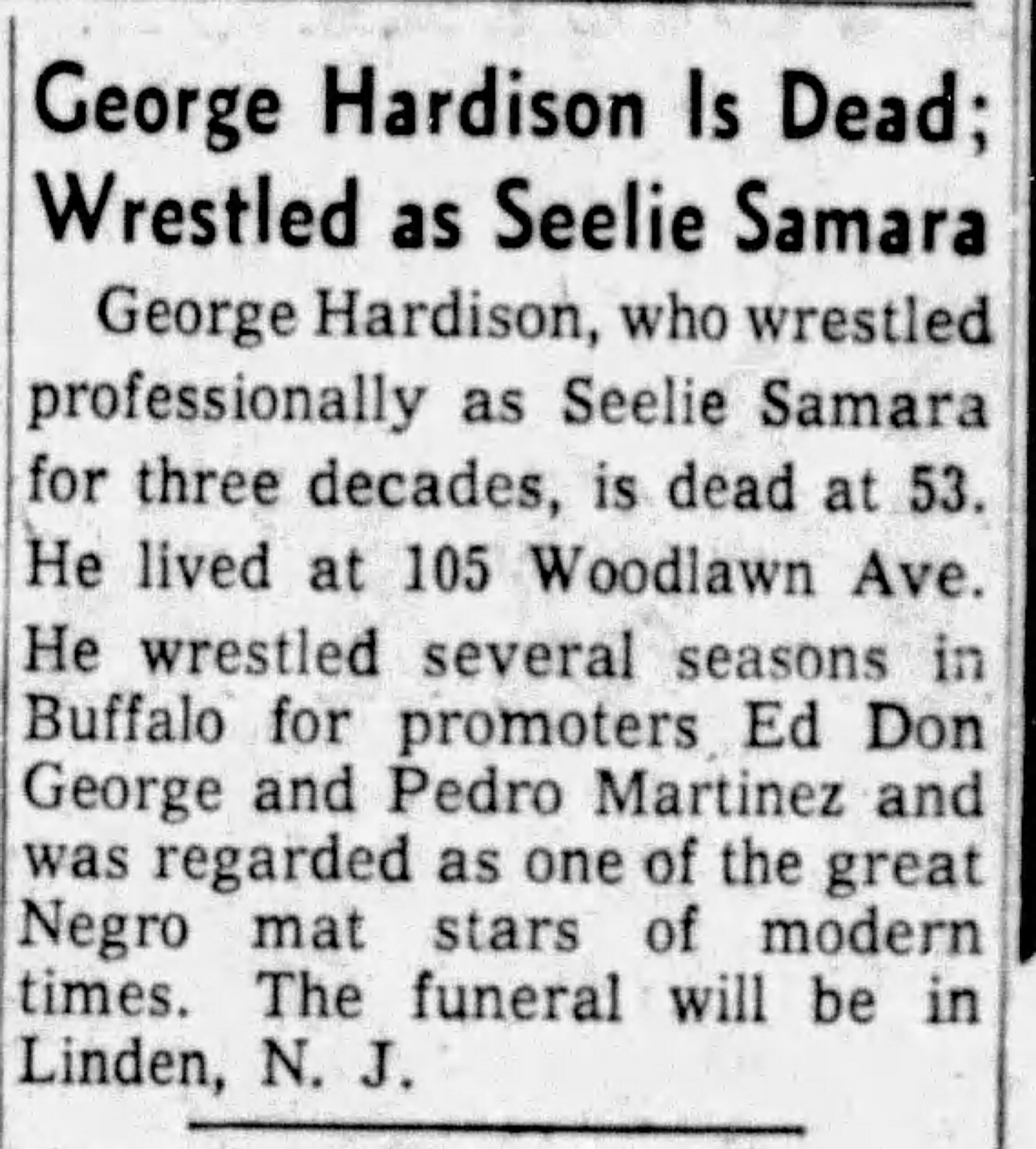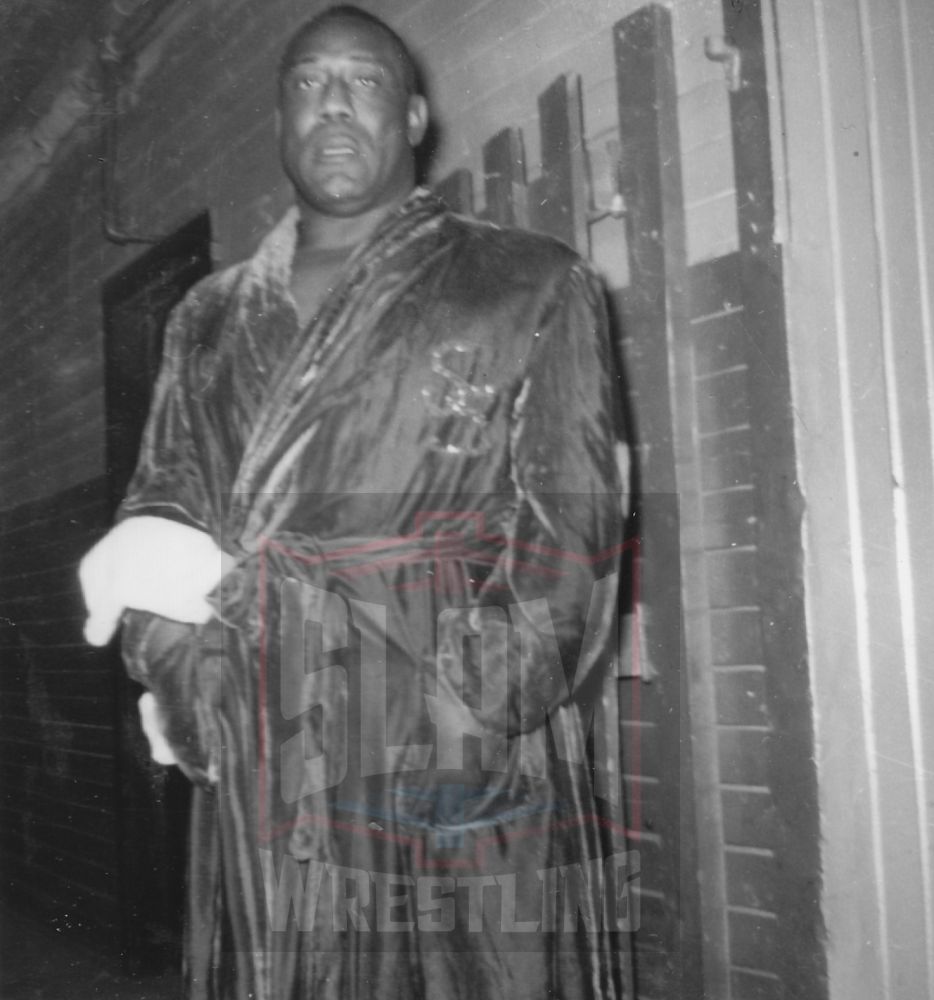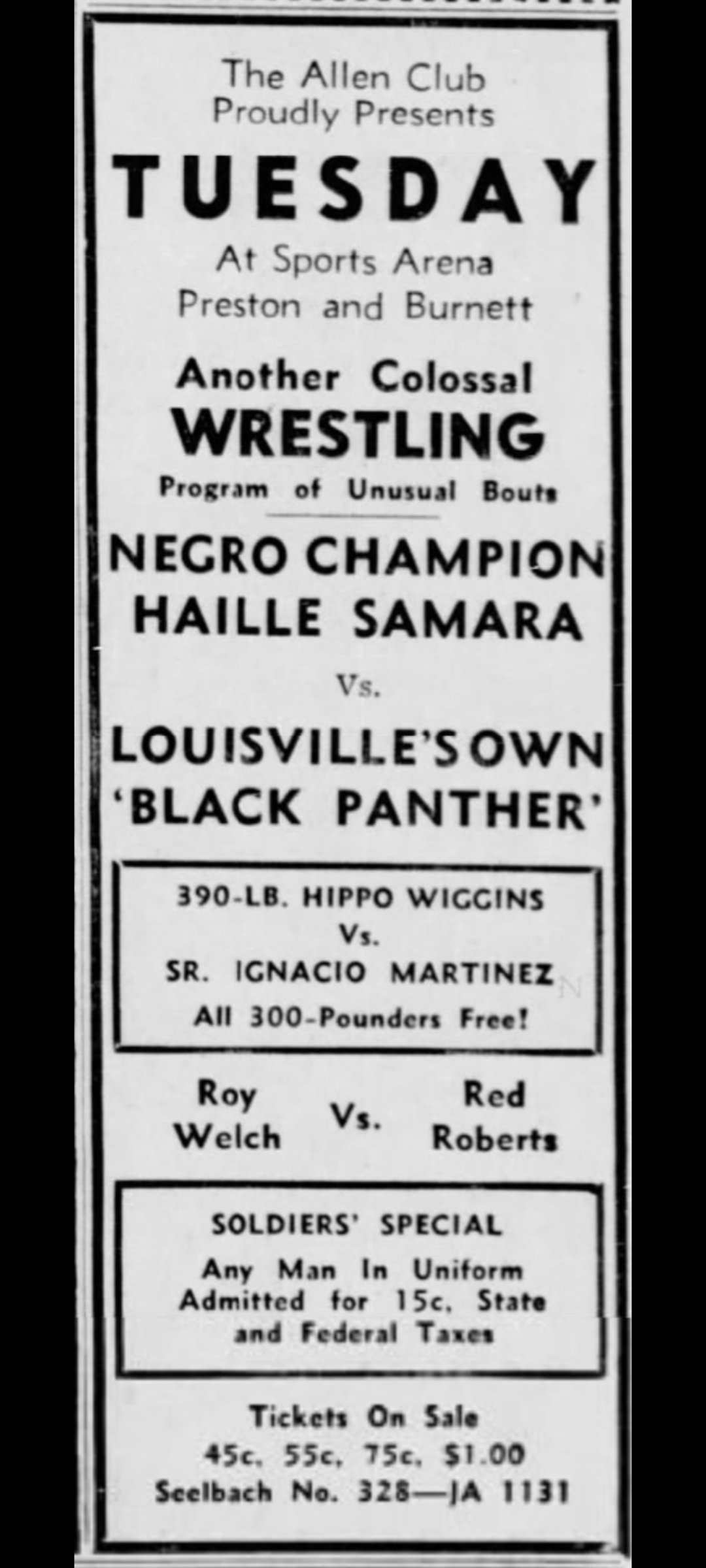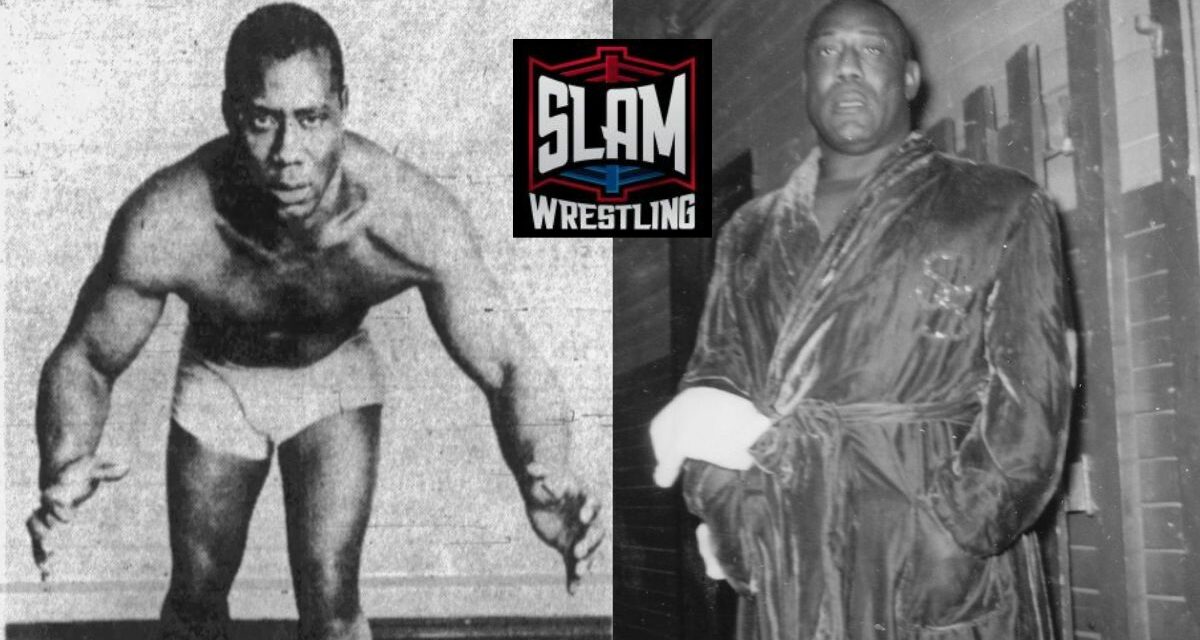Part 3 of 4
- Part 1: Seelie Samara a forgotten African-American great
- Part 2: Seelie Samara a star around the world
- Part 3: The final years and legacy of Seelie Samara
- Part 4: Big George: The origins of Seelie Samara
George Hardison’s post-wrestling career is something of a mystery. What is known is that he and his wife, Mary, settled down at their house around Summit, in northern New Jersey, the family’s long-time home. His wife, Mary, continued as a lab tech at the Millmaster Berkeley Chemical Company until her retirement, likely ensuring the family a decent pension.
All the Hardison children appear to have stayed in the area. The eldest son, John Phillip Hardison, also resided in Summit, where he was married and had a daughter named Rosemary in 1950, making a New Jersey retirement with his grandchildren just the thing the elder Hardison needed. 1
But something happened, and the next time we hear of George Hardison, he’s dead in western New York. George Samara died on November 9, 1964, in Buffalo, NY.
At the time of his death, Hardison resided at 105 Woodlawn Avenue in the city. This location would indicate that the aging strongman was considering an in-ring return for promoter Pedro Martinez. Maybe Hardison was bored at home, or the family needed the money.
Whatever brought him to Buffalo was never achieved. The cause of death was never made public.
But while the man, George Hardison, was no more, his spirit continued to thrive amongst his loving friends, family, and fans — fans who grew to love the ageless wonder that was Seelie/Haille/Ras Samara. He wowed fans, promoters, and sportswriters alike for what seemed like an eternity.

Buffalo Evening News. Buffalo, NY. November 11, 1964
Legacy
The Seelie Samara legacy lives on through the legacy of wrestlers now long past, wrestling historians now present, and the indomitable spirit of Samara who was equated with strength in Australia for decades after his death.
George Hardison wasn’t the first Black wrestler nor the first to compete in a mixed-race match. Still, his 1937/8 MWA and USWA title reigns helped highlight the glaring reality to wrestling promoters across the country: there was a fresh array of young, talented, and charismatic Black wrestling stars who could carry a card — and could be the face of an entire promotion.
He not only held his own in building the anticipation for his AWA title bout with Steve Casey but his local popularity was certified after his defeat, with his first post-loss appearance at the Boston Arena bringing in a capacity 5,000 crowd. That popularity was pretty much nationwide by 1945, with Samara a headliner in Arizona, California, Colorado, Illinois, Iowa, Kentucky, Kansas, Massachusetts, Michigan, Minnesota, Nebraska, New York, Ohio, Oregon, Rhode Island, South Dakota, Washington, Wyoming, Utah, and likely other states.
And that doesn’t even begin to cover Hardison’s many starring roles in Canadian provinces, nearly from coast-to-coast, and in foreign countries like India, Egypt, Singapore, and Australia. Hardison, as Samara, was part of a generation of Black wrestling talent, dynamic and charismatic grapplers who would become champions across the globe — and whose legacy is finally getting to be told. It’s been a humbling and rewarding experience to present the great Seelie Samara in this series.

A card from Seattle from 1945.
But the legacy of the great wrestlers of this generation is also being written by wrestling historians, who are beginning to sift through the dust of time to catalogue and archive the histories of these great wrestlers and tell their stories again through mediums like this and books such as John Cosper’s The Original Black Panther: The Life & Legacy of Jim Mitchell.
Both Cosper’s book and Jon Langmead’s epic Reginald Siki biography offer long overdue, critical, and thoroughly researched assessments of the driving forces in what was the First Golden Age of Black Wrestling. Mitchell, Siki, Samara, “King Kong” Clayton and Jack Claybourne were the role models that set the stage for the next Black mat kings such as Bobo Brazil, Ernie Ladd, and Luther Lindsay.
Lindsay was convinced to enter the wrestling business, thanks to Samara. The Calgary Herald, on the return of the ever-popular Lindsay to the city in 1967, noted that “Lindsay is a one-time college football ace who turned to pro wrestling at the urging of the great Seelie Samara. Lindsay has been a headliner since almost his first bout.”
Of course, part of the credit for Lindsay (real name Luther Goodall), needs to go to his trainer, the legendary Stu Hart, who would become so close to Lindsay that he would name one son “Ross Lindsay Hart” in honor of his friend.
Samara’s role in encouraging young athletes to take up wrestling and showing them how to succeed was critical. It would be the stars of Lindsay’s era who would continue the fight for Black wrestlers across the world. Those stars would include many women wrestlers like Babs Wingo, Ethel Johnson, and even the masked mystery woman, the “Black Panther.”
But back to George Hardison. His influence was apparent in every territory he worked. No matter where the location, who the opponent, or what the continent, Seelie Samara (or a variation thereof) was box office gold.
As the Post-Standard of Syracuse, NY, noted on March 6, 1950:
Samara has been more than a mild sensation wherever he has wrestled. Australian promoters were reluctant to let him go back to the states after he had all but riddled the field in the land Down Under; San Francisco promoter Joe Malcewicz still rues the day that he permitted Gorgeous George to enter the same ring with Samara; and up in Buffalo, Samara has become such a tremendous favorite that there is a movement underway to bring about a match with world’s champion Frank Sexton.
Promoters worldwide knew that when Samara stepped in the ring, it was all action, all intensity, and fan-friendly. He didn’t have to focus on silly gimmicks, like his head wrap, to do any of the marketing heavy-lifting after stepping in the ring — his matches were more than enough to keep the punters coming back for decades on end.
He was especially well-loved in Canada, with his popularity a measuring stick for talent during the period. In the February 27, 1947 edition of the Vancouver Sun, Alf Cottrell argued that “maybe I’m the one that is taking (Fred) Atkins too seriously… However, the guy has been packing them in, which must prove something. One of the regular attendants at the grappling tells me that Adkins reminds most of them of the popular Seelie Samara, which is regarded as something in his favor.”

Seelie Samara in London, Ontario, in 1956, near the end of his career. Terry Dart Collection
The most popular of Samara’s attributes, according to Cottrell, was his heft, strength, and, most importantly, “an air of sincerity.”
In that same column, Alf Cottrell also gives an insight into the sheer popularity of Seelie Samara down under: “I recall that when Ted Thye was in Australia a few months back, he was suddenly intrigued by the sight of a limousine moving slowly along the street. A limousine half a block long. It had a liveried chauffeur. As it was slowing down to stop before the entrance to a large nightclub, They stopped smartly along to have a gander at the Prime Minister or whoever else it might be when he alighted. The chauffeur opened the door, bowed, and out stepped Samara.”
The impression Samara made in Australia was so great that his Herculean strength was still remembered some 31 years later. Commenting on a particularly odious call by a cricket umpire, Bill Casey, in his Sunday, February 15, 1981 “Case History” column in the Sydney Morning Herald, wrote that the “last ball would have missed Jimmy Higgs’ leg stump by as far as Seelie Samara could aeroplane spin one of the Seven Dwarfs.”
I hope this work will help reinvigorate the discussion of early Black wrestlers and their impact on professional wrestling. Along with Jon Langmead’s important piece on Reginald Siki, and John Cosper’s books (he also has an excellent book on the Allen Wrestling Club in Louisville, KY), I hope this Seelie Samara piece re-establishes these wrestlers as vital pioneers.

Beyond their status as among the earliest Black wrestlers, men like Samara, Siki, and others named in this article — Tiger Jackson, “King Kong” Clayton, Jack Claybourne, etc. — not only broke color barriers years before Jackie Robinson, but did so as popular fan favorites.
Instead of being treated as an illiterate savage (like Kamala the Ugandan Giant from the 1980s), Samara was an educated, wealthy, and skilled wrestler — the champion of Ethiopia, Algeria, Afghanistan, or wherever else he was billed. Of course, this rosy picture is clouded by the appearance of racist stereotypes, like the “hard head” — something that still has yet to be fully eliminated from the sport.
But breaking these barriers and carrying themselves as the stars they were, these early wrestlers set the stage for the next generation of stars — names like Luther Lindsey, Bobo Brazil, and Sweet Daddy Siki.
But the Seelie Samara story is not yet fully told. The tours of India, Egypt, and Singapore are tantalizing prospects — especially given the treatment of Samara in Australia. He was a certified star, and those results hopefully exist somewhere.
There’s still more to be told of George Hardison the man. This project made ample use of genealogical materials, including those created and maintained by the living descendants of George W. Hardison Sr. While attempts were unsuccessfully made to connect with living relatives, I’m hopeful this biography will help fill holes in their family’s history and offer a better perspective of how big a star Seelie Samara was. And who knows, maybe that complete story can be told someday.
RELATED LINKS
- Part 1: Seelie Samara a forgotten African-American great
- Part 2: Seelie Samara a star around the world
- Part 3: The final years and legacy of Seelie Samara
- Part 4: Big George: The origins of Seelie Samara
FOOTNOTES
1 – “Hardison Family Tree” Ancestry.com. Provo, UT. Accessed February 2, 2023
Thanks
I would like to extend a special thanks to Steve Ogilvie and Greg Oliver for their assistance in researching this amazing topic. Their knowledge and expertise on Antipodean, global and Canadian history, saved me from countless hours of headaches — and several outbursts of obscenities. Don’t get me wrong — there were plenty of both — but their help was still unexpected, appreciated, and better helped me get to the heart of what made Seelie Samara so special for so many.

